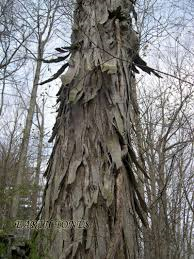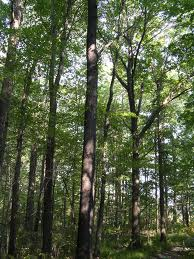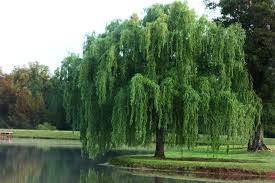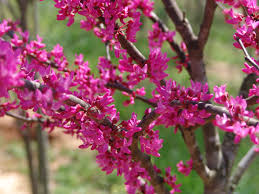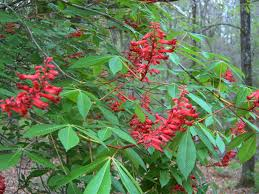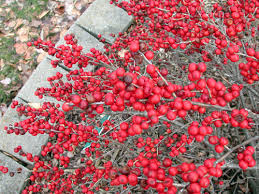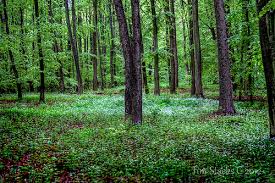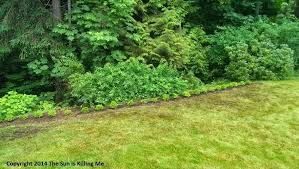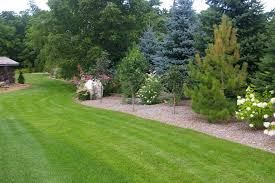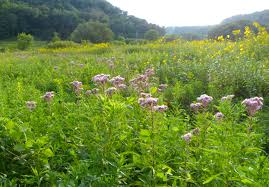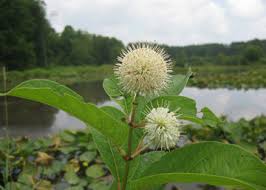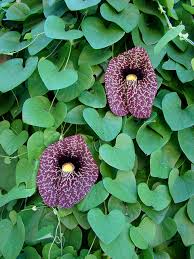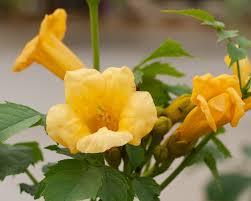The Layers of the Landscape
There are literal layers in the landscape providing for all the needs of wildlife.
Vertical Layers
- Canopy
- Understory Trees
- Shrubs
- Herbaceous Plants
- Ground Layer
Horizontal (Lateral) Layers Multi Layer
- Dynamic Edge Vines
- Wet Edge
- Wetlands
- Meadows and grasslands
Vertical Layers-Canopy
From right to left: Shagbark Hickory, White Oak, Black Cherry, Willow
The canopy is the forest’s photosynthetic engine, taking in huge amounts of carbon dioxide and in turn releasing great quantities of oxygen. The sheer mass of wood, foliage, fruit and seed production from canopy trees far exceeds that of the other layers. The canopy layer, especially the dead snags also provides nesting cavities for wildlife and insects.
Vertical Layers-Understory Trees
From right to left: Dogwood, Pawpaw, Red Bud, Red Buckeye
The understory of the forest is made up of 2 groups of plants. The first group of plants is the young specimens of the canopy species and the second is the inherently shorter growing species that never attain canopy height. In areas with very high deer populations there will be almost no young canopy specimens and just one or two of the shorter growing specimens.
Vertical Layers-Shrubs
Top Row left to right: Servicberry, Staghorn Sumac, Chokeberry, Spicebush
Bottom Row left to right: Red Osier Dogwood, Brandywine Viburnum, Gro-Low Sumac, Winterberry Holly
Inhabiting the vertical space from the ground layer to about 15’ the shrub layer contributes significantly to the rich biodiversity of the forest as well as a residential landscape. The shrub layer provides cover and shelter and adds a variety of foliage, seeds, berries, nuts and other fruits to sustain wildlife. The shrub layer offers an opportunity to add beauty and year round functionality to the landscape.
Vertical Layers-Herbaceous Plants
Typically the herbaceous layer has a higher diversity among the plant species than does the previous layers combined. The herbaceous layer occupies the vertical space from the ground layer to about 4’. This is the layer that offers the most opportunity to add nectar and pollen to the residential landscape.
Vertical Layers-The Ground Layer
The ground layer and its intricate living processes are among the most important to life in the entire ecosystem. The leaves, twigs, bits of bark, dead wood, seeds and seed pods, capsules all play critical roles in maintaining moisture, replenishing nutrients and creating microhabitats.
Horizontal Layer-The Dynamic Edge
The transition zone between two different habitats or ecosystems such as woods to meadow. The edge is the most frequently encountered zone in the residential landscape. Edges exhibit a high degree of constantly shifting resources and organisms.
Horizontal Layer-Wet Edges
One of the most biologically diverse habitats, the wet edge is where drier habitats such as woodlands or prairies meet streams or ponds or wetlands.
Horizontal Layer-Wetlands
Although wetlands are not typically found in residential landscapes, constantly wet ground is found in some yards. Many of the plants that occur in wetland habitats are adaptable to moisture levels and soil conditions found in residential landscapes.
Horizontal Layer-Meadows and Grasslands
Meadows and grasslands are beautiful, highly dynamic habitats that are constantly changing. Most found east of the Mississippi are the result of man clearing the land for ag or industry and then abandoning the land. Instead of mowing the entire back yard try planting a low profile prairie.
Multi Layers-Vines
Vines are found in multiple landscape layers and offers great opportunity to add color, texture, screening and habitat to landscapes of any size.
A typical suburban neighborhood
Does this look layered to you
Pollinators in every layer
The amount of diversity within the physical makeup of the landscape directly effects and determines the amount of wildlife that can exits there. Try to plant the landscape so that something is blooming from early spring until late fall.

